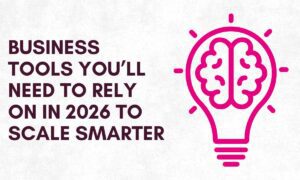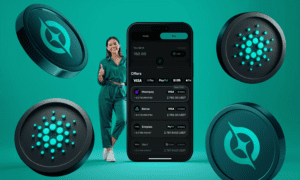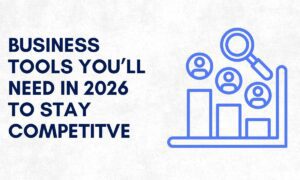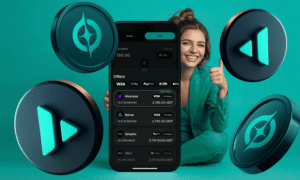Traditional marketing methods are often insufficient to capture the attention of tech-savvy audiences. Particularly within the developer community, the conventional “sell-first” strategies are often met with skepticism. This is where developer evangelism steps in as a transformative force. More than just a buzzword, it serves as a strategic bridge between product innovation and user adoption. The power of developer evangelism lies in its ability to humanize technology, inspire trust, and cultivate communities—all of which are essential in modern tech marketing.
Understanding Developer Evangelism and Its Purpose in Marketing
Before diving deep, it’s essential to understand what developer evangelism entails. A developer evangelist is not just a marketer in disguise. Instead, they are technical experts who engage directly with developers, offering support, guidance, and inspiration. They are both teachers and advocates, serving a dual role—educating external developers while simultaneously relaying feedback to internal teams.
Unlike traditional marketing, which often focuses on direct selling, developer evangelism focuses on building long-term relationships and community trust. Therefore, its strength lies not in flashy advertisements but in meaningful conversations, insightful content, and practical support.
Why Developer Evangelism Matters More Than Ever
The modern tech industry is increasingly open-source, decentralized, and community-driven. With this shift, the role of the developer has grown substantially. Developers now often influence product choices, architecture decisions, and even purchasing authority. Consequently, reaching developers effectively is no longer optional—it’s critical for success.
Furthermore, developers are inherently skeptical of sales pitches. They value authenticity, functionality, and real-world use cases. Thus, marketing to them requires a fundamentally different approach. Developer evangelism, with its emphasis on trust and authenticity, is perfectly suited to this task.
Building Authenticity Through Technical Engagement
One of the most powerful aspects of developer evangelism is its emphasis on technical credibility. Evangelists often have engineering backgrounds, allowing them to speak the same language as their audience. This credibility helps to eliminate the barriers often faced in traditional marketing.
By creating technical content—such as sample code, how-to guides, video tutorials, and in-depth documentation—developer evangelists are able to demonstrate the value of a product without sounding overly promotional. As a result, developers are more likely to engage, test, and eventually adopt the technology.
Amplifying Reach Through Developer Communities
Community building is at the heart of effective developer evangelism. Whether it’s through meetups, webinars, hackathons, or online forums, the goal is to foster spaces where developers can learn, share, and collaborate.
Interestingly, these communities do more than just support product adoption. They become organic marketing engines, where word-of-mouth drives awareness. Developers are known to trust their peers more than brands, so once an evangelist gains the trust of a few, the message can spread exponentially.
In addition, these communities become valuable feedback loops. Developers often identify pain points, suggest improvements, and highlight use cases the company may have never considered. This feedback, when routed back into product development, leads to better products and stronger market fit.
Empowering Developers Through Education and Enablement
Education is a cornerstone of developer evangelism. Empowered developers are more likely to be advocates. Evangelists often create developer onboarding programs, training materials, live demos, and workshops designed to lower the learning curve.
This approach has a two-fold benefit. First, it helps developers get value from the product faster. Secondly, it builds loyalty and engagement because developers feel supported and understood.
Moreover, by contributing to open-source projects or participating in developer conferences, evangelists demonstrate thought leadership, further boosting the company’s visibility and reputation in the tech space.
Leveraging Storytelling and Use Cases for Greater Impact
Another critical dimension of developer evangelism is storytelling. While raw technical specs are important, stories give context and make products relatable. Evangelists often share real-world case studies, success stories, and innovative applications built using their tools.
These narratives don’t just inform—they inspire. When developers see what others have built, they’re more likely to envision their own solutions. Therefore, storytelling becomes a vehicle for creative engagement, helping developers move from curiosity to commitment.
Measuring Success in Developer Evangelism
Unlike traditional marketing metrics, the success of developer evangelism is often measured by qualitative impact rather than just click-through rates. Key performance indicators (KPIs) may include:
Growth in developer community participation
- Increase in product API usage
- Number of developer tutorials published
- Contributions to open-source repositories
- Developer feedback and satisfaction scores
These metrics reflect both engagement and enablement, offering a fuller picture of long-term value creation.
Common Challenges in Developer Evangelism and How to Overcome Them
Despite its many benefits, developer evangelism is not without challenges. One common issue is the difficulty of scaling personalized engagement. Evangelists often wear multiple hats—speaker, coder, writer, and community leader—which can lead to burnout.
To mitigate this, it’s essential to build an evangelism team rather than relying on a single individual. Investing in tools that automate outreach or support content management can also help scale impact without sacrificing authenticity.
Another challenge lies in aligning the evangelist’s mission with company goals. It’s crucial that leadership understands the long-term ROI of evangelism. Unlike ads or email campaigns, the benefits of developer trust may take months to manifest—but when they do, they are both powerful and enduring.
Integrating Developer Evangelism into the Broader Marketing Strategy
Developer evangelism should not operate in a silo. To maximize its effectiveness, it must be integrated with the broader marketing and product strategy. This means close collaboration between marketing, product, sales, and engineering teams.
For example, insights from evangelists can inform content marketing topics, SEO strategies, or even webinar themes. Similarly, marketers can help amplify the reach of evangelist-created content through social media, newsletters, and paid promotion.
By working together, the entire organization can present a cohesive, credible message that resonates with developers and decision-makers alike.
The Prospect of Developer Evangelism in a Rapidly Changing Tech Landscape
As technology continues to evolve, so too will the role of the developer evangelist. Emerging trends like AI, blockchain, and edge computing will create new technical challenges and learning curves. This, in turn, will increase the demand for credible guides who can help developers navigate these frontiers.
Moreover, with remote work becoming the norm, online engagement strategies such as virtual conferences, digital workshops, and interactive documentation will become even more critical. Companies that embrace developer evangelism as a core strategy—not just a marketing function—will be better positioned to innovate, grow, and retain developer mindshare.
Final Thoughts
The power of developer evangelism in tech marketing cannot be overstated. It is not merely a support role or a promotional tactic—it is a strategic pillar that enables growth through community trust, technical support, and authentic engagement.
By investing in developer evangelism, tech companies don’t just promote products—they build ecosystems, nurture advocates, and create sustainable competitive advantages in an increasingly developer-driven world. If you’re looking to position your brand at the forefront of innovation, there’s no better time to prioritize and amplify your developer evangelism strategy.





























